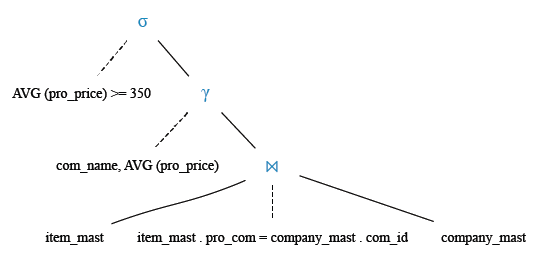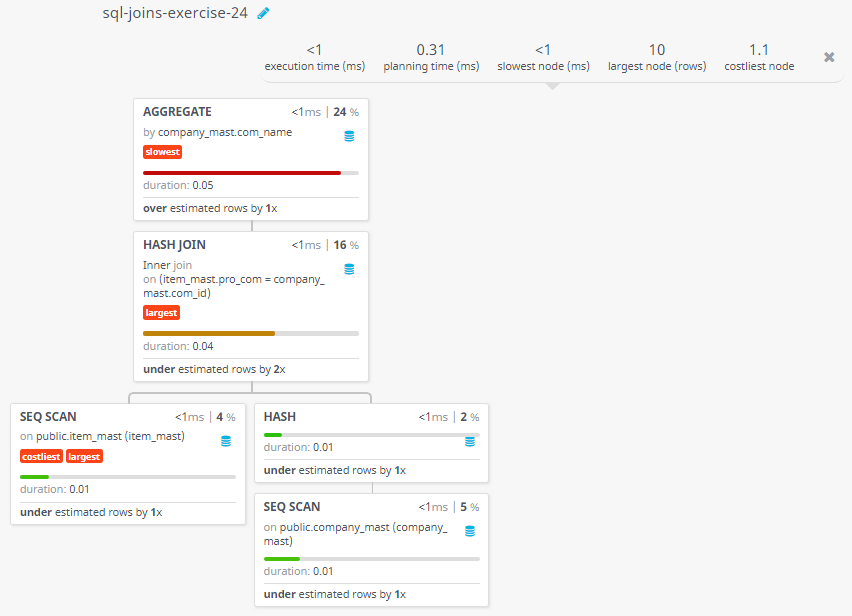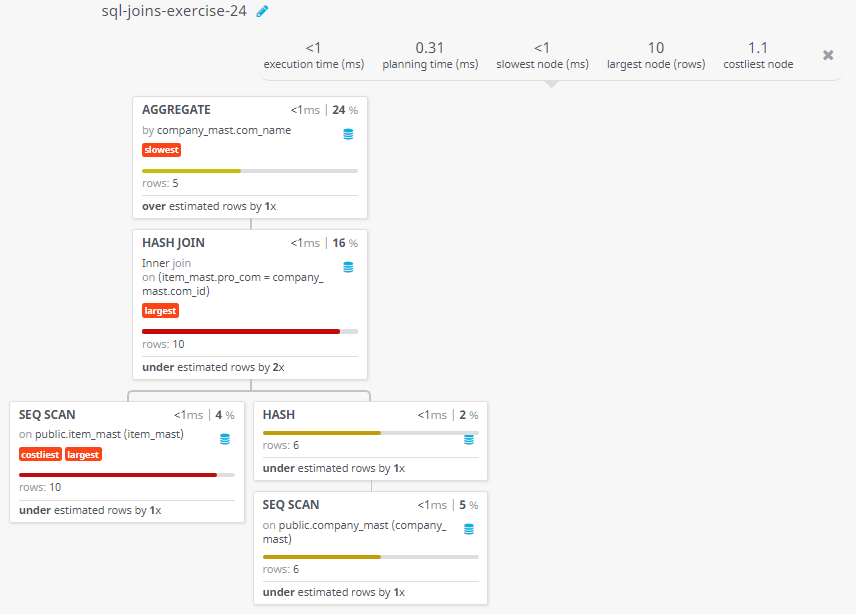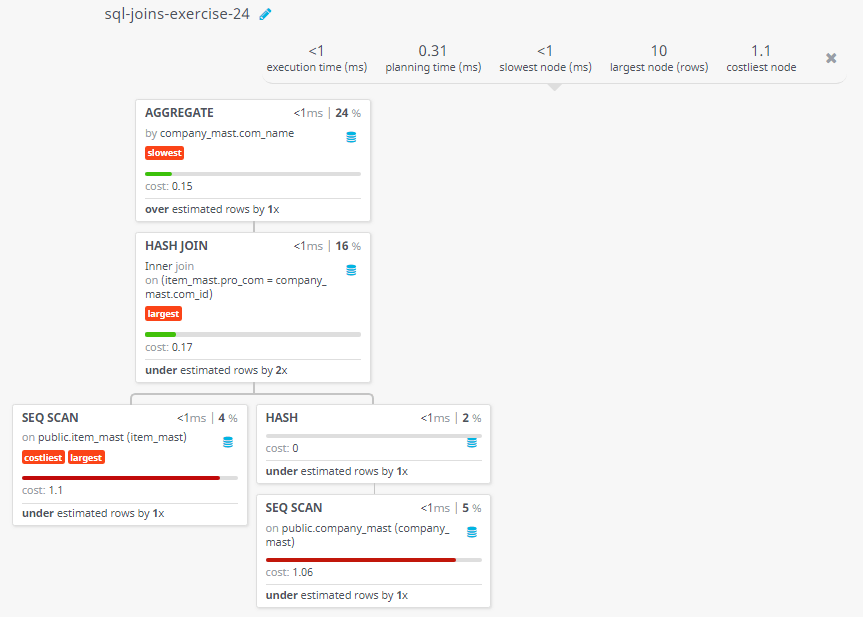SQL Exercise: Company whose products have an average price
24. Average Price (>=350) by Company
From the following tables write a SQL query to calculate and find the average price of items of each company higher than or equal to Rs. 350. Return average value and company name.
Sample table: company_mast
COM_ID COM_NAME
------ -------------
11 Samsung
12 iBall
13 Epsion
14 Zebronics
15 Asus
16 Frontech
Sample table: item_mast
PRO_ID PRO_NAME PRO_PRICE PRO_COM
------- ------------------------- -------------- ----------
101 Mother Board 3200.00 15
102 Key Board 450.00 16
103 ZIP drive 250.00 14
104 Speaker 550.00 16
105 Monitor 5000.00 11
106 DVD drive 900.00 12
107 CD drive 800.00 12
108 Printer 2600.00 13
109 Refill cartridge 350.00 13
110 Mouse 250.00 12
Sample Solution:
-- Selecting the average of 'pro_price' and the company name from the result of an inner join between 'item_mast' and 'company_mast' tables
SELECT AVG(pro_price), company_mast.com_name
-- Specifying the tables to retrieve data from ('item_mast' as the left table and 'company_mast' as the right table)
FROM item_mast
-- Performing an inner join based on the equality of 'pro_com' in 'item_mast' and 'com_id' in 'company_mast'
INNER JOIN company_mast
ON item_mast.pro_com = company_mast.com_id
-- Grouping the results by the company name
GROUP BY company_mast.com_name
-- Applying a filter to the grouped results, including only those with an average 'pro_price' greater than or equal to 350
HAVING AVG(pro_price) >= 350;
Output of the Query:
avg | com_name
-----------------------+----------
5000.0000000000000000 | Samsung
650.0000000000000000 | iBall
1475.0000000000000000 | Epsion
500.0000000000000000 | Frontech
3200.0000000000000000 | Asus
(5 rows)
Explanation:
The said SQL query is selecting the average price (AVG(pro_price)) of items and the name of the company (company_mast.com_name) they are associated with, by joining the item_mast and company_mast tables on the pro_com column in the item_mast table and the com_id column in the company_mast table. The results are grouped by the company name and only showing the results where the average price is greater than or equal to 350.
Relational Algebra Expression:
Relational Algebra Tree:
Go to:
PREV : Average Price by Company.
NEXT : Most Expensive Product by Company.
Practice Online
Query Visualization:
Duration:
Rows:
Cost:
For more Practice: Solve these Related Problems:
- Write a SQL query to join company_mast and item_mast, then group by com_name and calculate the average product price for items priced at least 350.
- Write a SQL query to list each company along with the average price of products where pro_price >= 350.
- Write a SQL query to compute and display the average item price per company, including only those items with a price not less than 350.
- Write a SQL query to display company names and the average product price for items meeting the condition pro_price >= 350, using a WHERE clause before grouping.
Have another way to solve this solution? Contribute your code (and comments) through Disqus.
What is the difficulty level of this exercise?
Test your Programming skills with w3resource's quiz.





